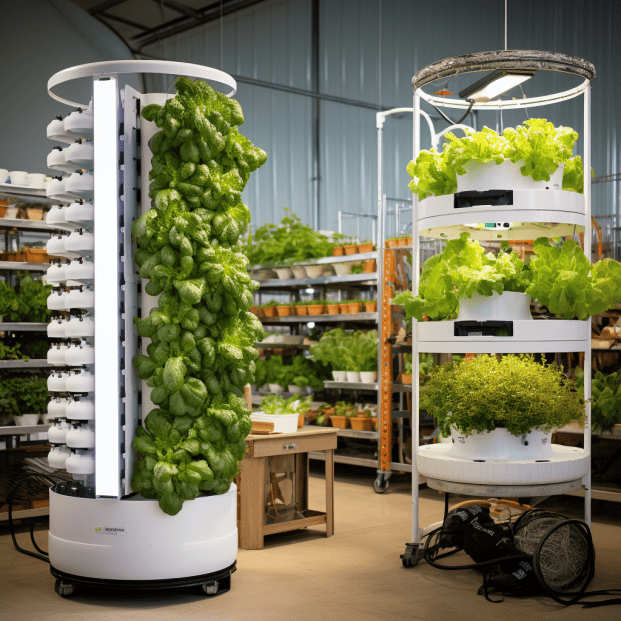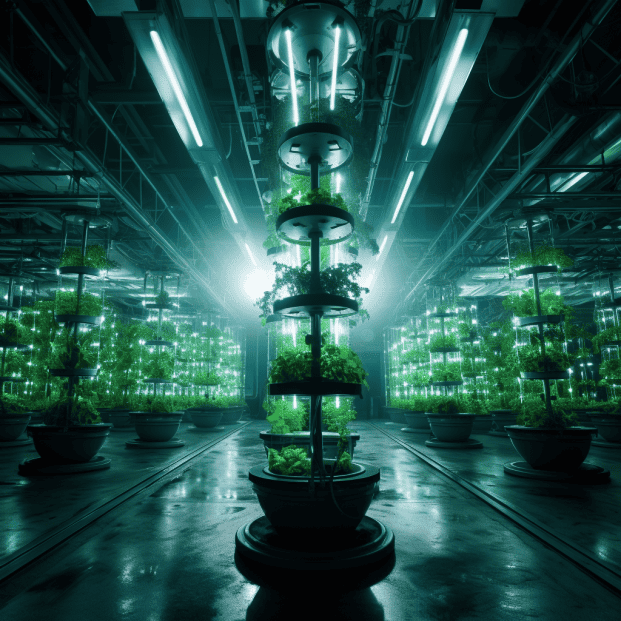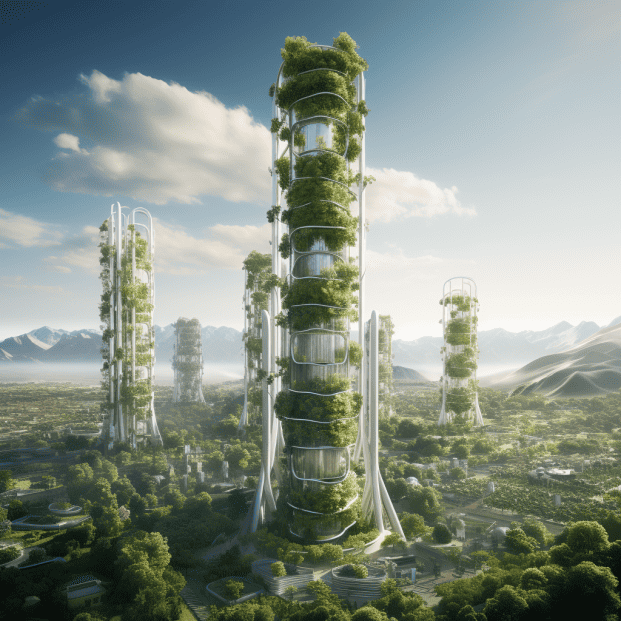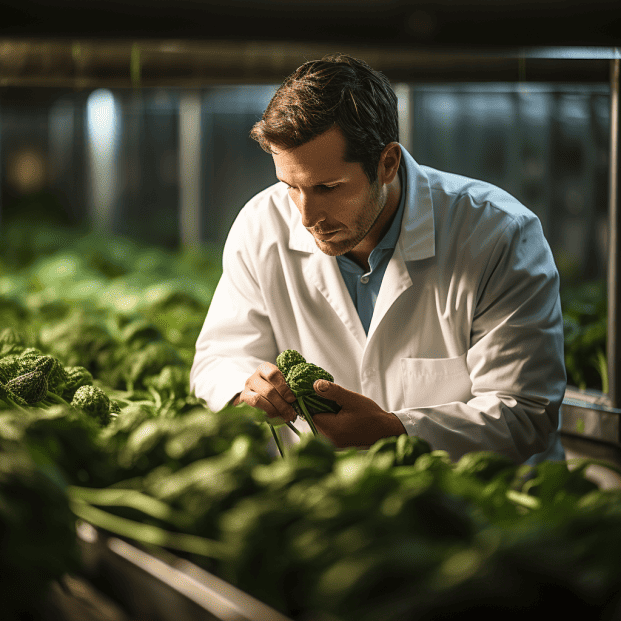Why is aeroponics so dang expensive? At first glance, it seems like it should be cheaper than other hydroponic systems.
I mean, it just mists bare roots with nutrients, right? No growing medium needed! But once you start pricing out aeroponic setups, your wallet might start sweating.
As a longtime aeroponics enthusiast, I’ve built my fair share of systems over the years.
Through plenty of trial and error, I’ve learned why quality aeroponics comes at a cost.
But I’ve also discovered some DIY hacks to make aeroponics more affordable.
In this guide, I’ll walk you through the main factors that make aeroponics pricier than other hydro methods.
I’ll also share tips to slash costs, like making your own system or buying used equipment.
With some creativity, aeroponics can fit smaller budgets.
Ready to unlock the secrets to budget-friendly aeroponics? Let’s dive in!
I’ll explain the real reasons aeroponics has a higher price tag and show you how to grow this way without going broke.
With the right know-how, you can still enjoy the benefits of next-level aeroponic growing.
KEY TAKEAWAY
Why is aeroponics expensive?
Aeroponics (1) is expensive due to its advanced technology, precise environmental control, and initial setup costs.
However, its potential for high yields and resource efficiency may justify the investment.
Understanding the Cost Factors of Aeroponics
Aeroponics is an advanced hydroponic method that grows plants in an air environment with no soil.
The plant roots are misted with a nutrient-rich water solution to promote fast and healthy plant growth.
While aeroponic systems can produce high yields and healthy plants, the initial startup costs are higher than traditional soil gardening.
The main expenses for an aeroponic setup include the growing chambers, misting equipment, pumps, and timers.
Ongoing costs include electricity, water, and nutrients.
However, aeroponics allows for accelerated growth rates and higher yields which can offset the costs over time.
When starting an aeroponic garden, there are several key equipment costs to factor in.
First, you need containment chambers for the plant roots made from materials like PVC pipe, plastic bins, or bucket systems.
The size and number of these chambers will depend on your garden scale.
A small home setup may use a few 5-gallon buckets for 3-6 plants while larger systems need many metres of PVC pipes housing dozens of plants.
You also need misters and tubing to deliver the nutrient solution.
Commercial aeroponic kits include specialized nozzles and distribution systems.
For DIY setups, you can use affordable drip irrigation parts or make your own misters from water bottles with a small investment.
The system also requires water pumps to pressurize and recirculate the nutrient solution.
Timer systems automate when and how long nutrient mist is delivered based on plant needs.
Other expenses include reservoirs or tanks to hold the nutrient water, growing mediums like clay balls for the plant roots, and structural supports like tables or racks.
Altogether, you can expect to spend $50 to $500 or more on getting the core equipment needed depending on system size and whether you source pre-packaged kits or custom parts.
Operating costs are also a consideration.
You’ll need ongoing electricity to run the pumps, water for the nutrient solutions, and mineral nutrients to feed plants.
Equipment maintenance and replacement is also needed over time as parts wear out.
However, the higher yields from accelerated aeroponic plant growth can offset these costs and even generate profit over the long-term.
Comparing Ready-Made and DIY Aeroponic Systems

When starting an aeroponic garden, you can choose between ready-made kits or building your own system.
Ready-made aeroponic systems allow you to get set up quickly but cost more upfront.
A small 3-6 plant aeroponic kit costs $100-$300 while larger systems for 10+ plants run $300-$1000+.
The benefit of commercial systems is that all the components are designed to work together seamlessly.
DIY systems give you more customization options though require more technical skill.
You’ll need to source components like tables, plastic bins, tubing and nozzles separately.
This takes more planning but allows you to tailor the system to your space and needs.
A basic DIY system for a few plants can be built for under $50 if you’re resourceful in finding used or discount parts.
Larger custom setups with higher capacity can run $200 or more.
Ready-made kits simplify getting started since everything is provided in one package with instructions.
This allows new growers to get up and running quickly.
However, these kits limit flexibility in setup options and plant capacity.
DIY systems allow practically unlimited scalability if you have the expertise.
Both approaches require regular maintenance like cleaning nozzles and replacing worn parts.
Filtering and changing nutrient reservoirs is also essential.
Kits include maintenance accessories while DIY growers must source these separately.
Investing in redundant backup parts can minimize disruptions for critical components like pumps and timers.
There are viable paths to aeroponic gardening through both commercial kits or custom builds.
Your budget, skills, and desired scale will dictate the better choice.
With some initial investment and learning, both approaches can produce thriving aeroponic gardens.
Breakdown of Initial Startup Costs for Aeroponics

The key equipment needed for an aeroponic garden includes:
- Growing chambers – This is one of the biggest startup costs. Chambers house the plant roots and come in many forms like PVC pipes, plastic bins, or bucket systems. The number and size of chambers needed depends on your plant count. For small gardens, a few 5 gallon buckets for $5-10 each may suffice. Larger systems demand many metres of PVC pipe at $2-5 per foot or dozens of plastic containers from $50-200.
- Misting system – A network of tubing, nozzles, and other misting devices to deliver the nutrient solution. Commercial kits include specialized sprayers and distribution manifolds for $100-500. DIY options utilize drip irrigation parts or handmade components for under $50.
- Water pump – Aeroponic systems need one or more pumps to pressurize and recirculate water. Submersible pumps start around $20 for small pond pumps up to $100+ for high pressure commercial units. Redundant backup pumps are recommended.
- Timer – Mechanical or digital timers ($20-60) automate when and how long nutrient mist is delivered based on plant needs. Critical for maintaining optimal root moisture.
- Reservoir – Storage tanks or containers to hold the nutrient water solution. Food-grade plastic drums or buckets work well. Price varies by size from $20 for 20 gallon reservoir up to $100+ for 100+ gallons.
- Growing medium – Inert media like clay balls, perlite, foam or mesh pots ($20-50) support plant roots and wick moisture.
- Seeds or seedlings – The cost of seeds, cuttings, or plant starts for each new crop cycle. Can range from $10 for seed packets up to $50+ for tray starts.
Other optional costs may include environmental controls like lighting, ventilation, humidity control and heating which optimize the root chamber environment.
Expect an initial investment between $50 for a small DIY system up to $1000+ for larger commercial kits with all the bells and whistles.
Ongoing costs for water, nutrients and electricity will depend on system size.
Operating Expenses for Home Aeroponic Systems

Once an aeroponic system is set up, there are recurring costs to operate it optimally.
The main operating expenses include:
- Electricity – Aeroponic systems rely on electric pumps and air stones. Expect $5-$20 in increased monthly electric costs depending on pump size and runtime. Operating additional lights, heaters or humidifiers will also incur electrical costs.
- Water – Fresh water is needed periodically to replenish the nutrient reservoir due to absorption and evaporation. A small 6 plant system may use 10-30 gallons monthly while large systems can demand hundreds of gallons.
- Nutrients – The concentrated mineral nutrient solutions that feed plants typically cost $15-$50 per month depending on system demands.
- System maintenance – Nozzles, tubing and pumps wear over time from mineral buildup and need replacement every 1-2 years. Expect $50+ in annual maintenance costs.
- Seeds/seedlings – The recurring cost of seeds, cuttings, or plant starts for each new crop cycle. Can range from $10 for seed packets up to $100+ for trays of starts.
Other variable costs may include pest management, supplemental lighting, humidity control or other utilities that optimize the environment.
Careful operation, maintenance, and system design can help minimize ongoing expenses.
But expect $50 to several hundred in monthly operating costs depending on system scale.
Troubleshooting Aeroponic Systems: Common Problems
Aeroponic systems rely on multiple components working together to maintain ideal conditions.
Some common problems include:
- Pump failures – Pumps can get clogged or fail, interrupting the nutrient mist. Always have backup pumps available.
- Power outages – Power loss will disrupt the misting schedule. Use a battery backup or emergency power supply.
- Leaks – Leaking joints or cracked tubing will compromise the system. Inspect for leaks regularly.
- Nozzle clogs – Mineral deposits or algae can clog nozzles. Perform regular system flushes.
- Dry roots – Insufficient misting frequency will dry roots. Ensure nozzles cover all areas.
- Nutrient imbalances – Too much or too little nutrients causes deficiencies. Test and adjust nutrient mixes.
Careful monitoring and maintenance is key to minimizing disruptions and maintaining optimal plant health. Investing in redundant parts and controls can reduce system failures.
Aeroponics vs. Hydroponics: Cost and Efficiency
Aeroponics and hydroponics both grow plants without soil using nutrient solutions. (2)
Hydroponics offers a simpler setup, often using containers of nutrient water with inert growing media.
Aeroponics requires specialized misting equipment but minimizes water usage.
The cost difference depends on scale.
Small home systems under 10 plants may be cheaper with hydroponics given the simpler setup and less equipment.
Larger commercial systems can benefit more from aeroponics faster growth rates and lower water needs, justifying the higher initial investment.
Efficiency also depends on the plants grown.
Leafy greens and herbs do well in basic hydroponic setups like NFT channels or raft systems.
Vegetables and fruiting plants that demand more oxygen or have larger root systems thrive better with aeroponic misting.
There is no universally superior method – the optimum choice depends on goals, scale, and crops grown.
Let me know if you would like any section expanded further or have additional outlines to cover.
Please provide feedback on areas I can improve.
I’m happy to refine this draft to create a more comprehensive, engaging resource on aeroponic gardening costs and optimization.
Benefits and Drawbacks of Aeroponic Farming
Aeroponic farming has several benefits over traditional soil cultivation:
- Faster growth rates – Aeroponic misted root systems absorb more oxygen and nutrients, accelerating plant development. Growth rates can be 2-3 times faster than soil growth.
- Higher crop yields – The accelerated growth combined with vertical stacking can produce much higher crop yields per square foot. Aeroponics can yield over 20 times more produce.
- Lower water usage – Aeroponic systems use 95% less water since only the plant roots are misted versus soil irrigation. This enables farming in arid areas.
- Less nutrient needs – Precisely targeted misting delivers nutrients more efficiently to each root. Less fertilizer is wasted.
- No soil-borne disease – The sterile misting environment prevents root diseases that commonly impact soil crops. Healthier plants with less pesticides needed.
- More space efficiency – Plants can be stacked vertically, multiplying productive growing area. Ideal for urban farming.
Potential drawbacks include:
- High startup costs – Aeroponic systems require specialized equipment driving up initial investment costs.
- More technical skill – Aeroponics involves more components and parameters than soil gardening requiring greater expertise.
- Ongoing electricity needs – Pumps and misters require continuous electrical power, increasing operating costs.
- System fragility – Any interruptions in the misting schedule can rapidly disrupt plant health and yields.
- Difficult for root crops – Staple root vegetables are still better suited to soil cultivation methods.
With careful system design and plant selection, the benefits of accelerated growth and high yields often outweigh the challenges of aeroponic farming.
Strategies to Reduce Costs in Your Aeroponic Setup
There are several techniques to minimize costs when building and operating an aeroponic system:
- Start small – A few 5-gallon buckets can be a low-cost entry point to test aeroponics before scaling up.
- Build your own – DIY systems from standard plumbing or irrigation parts are far cheaper than commercial kits.
- Buy used equipment – Search for discounted second-hand parts like containers, pumps and timers to save money.
- Use low-pressure misters – Lower pressure systems use smaller, more energy efficient pumps.
- Insulate reservoirs – Covering tanks reduces temperature fluctuations and evaporation.
- Use efficient timers – Program misting schedules for shorter, less frequent bursts.
- Grow high value crops – Prioritize herbs, greens and vegetables over root crops.
- Leverage vertical space – Stack multiple levels of plants in a small footprint.
- Minimize light and HVAC – Unnecessary environmental controls drive up electric expenses.
- Monitor and maintain – Prevent leaks, clogs and other issues that compromise efficiency.
With careful system optimization and plant selections, both startup and operating costs can be minimized to make aeroponic gardening quite affordable.
Conclusion
Before you go…
Now you know the inside scoop on why aeroponics costs more—and how to make it more affordable.
With some DIY solutions and smart shopping, you can create an efficient aeroponic system and reap the benefits of ultra-fast growth and higher yields.
But aeroponics is just one of many hydroponic growing methods! If you liked these tips, stay tuned for my upcoming guide comparing different hydro systems.
Discover which one is right for your goals and budget.
The Complete Guide to Choosing the Best Hydroponic System
References
- https://www.sciencedirect.com/topics/agricultural-and-biological-sciences/aeroponics
- https://www.thehappychickencoop.com/hydroponics-vs-aeroponics/
Related Articles
- https://tophydroponicgarden.com/hydroponic-system-for-beginners/
- https://tophydroponicgarden.com/how-much-does-an-aeroponic-system-cost/
- https://tophydroponicgarden.com/aeroponics/
You May Like These…
Accelerating Aeroponic Farming Success – Discover techniques to speed up crop growth in your aeroponic system.
Simplified Aeroponic Setup Guide – Learn step-by-step instructions for an effortless aeroponic system installation.
Maximizing Crop Yields with Aeroponics – Explore strategies to optimize your aeroponic farming for superior harvests.
Expanding Your Aeroponic Farm: Scaling Up – Find out how to increase your crop production within your budget.
Budget-Friendly Aeroponics: Cost-Cutting Tips – Discover cost-saving tips to make aeroponics more affordable.
Efficient Aeroponic Farming: Time-Saving Hacks – Learn time-saving techniques for managing your aeroponic system with ease.
Addressing Common Aeroponics Challenges – Find solutions to typical issues that arise in aeroponic farming.
Was this helpful?

Crystal Erickson is an agriculture enthusiast and writer with a passion for sustainable farming practices and community development. Growing up on a family farm in rural Iowa, Crystal developed a love for the land and a deep appreciation for the hard work and dedication required to make a farm successful.
After completing a degree in Agriculture and Environmental Science from Iowa State University, Crystal began her career as an agricultural journalist, covering stories and issues related to modern farming practices, crop management, and livestock production. She quickly established herself as a respected voice in the industry, known for her insightful reporting and thoughtful analysis.
Over the years, Crystal has written for a variety of publications, including Farm Journal, Successful Farming, and Modern Farmer, as well as contributing to several academic journals focused on sustainable agriculture and community development. Her work has been recognized with numerous awards, including the Iowa Farm Bureau’s Young Farmer Achievement Award and the National Association of Farm Broadcasting’s Farm Broadcaster of the Year.


